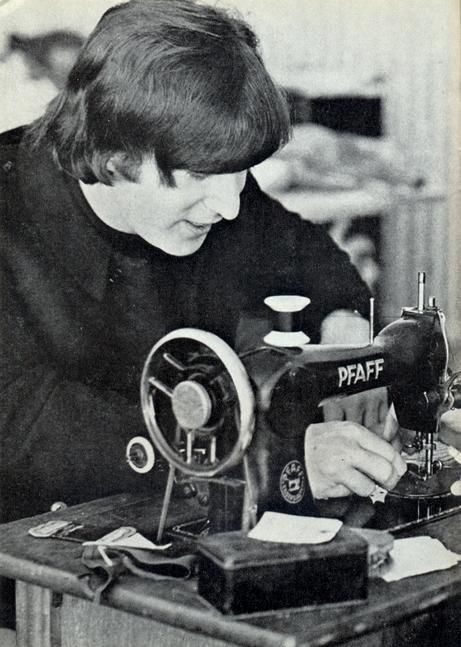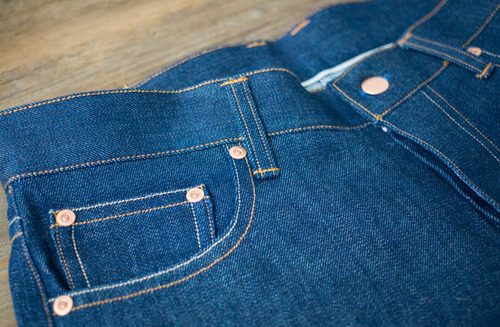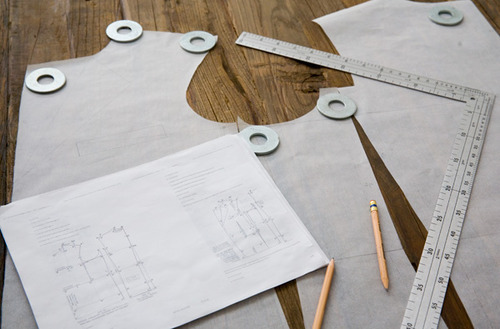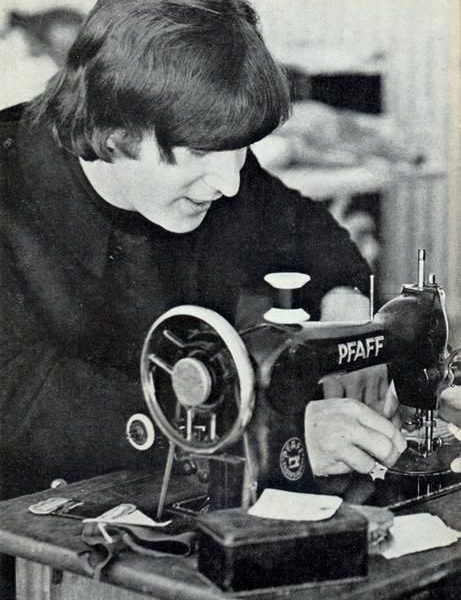
Sometimes the hardest part about learning something new is figuring out how to take those first steps. When I spoke to Taylor and Arno a few weeks ago about how they learned to make clothes, I figured some readers might be interested to know how they can learn to do the same. Granted, neither are professional tailors, but they’re still remarkably good (and not so far along that they don’t remember what it’s like to pick up a needle for the first time). So, from what tools you’ll need to what books you’ll want to read, here’s Taylor and Arno’s advice on how you can learn to be your own tailor.

Taylor’s Advice for Beginners
Learn how to use a sewing machine first. A simple household machine will be fine for most things. When you are ready to move into heavy denim or thick canvas, then you might want to upgrade to an industrial machine. Although you can buy them online, I recommend going to a physical store. Most will be able to show you basic things, such as how to wind a bobbin, adjust the tension, or control the speed. Some will also offer classes or know people who can give you private lessons.
Once you know a little bit about how your machine works, you are ready for your first simple project – an apron, tote bag, pajamas, etc. These are things that can be useful, and items you can be proud of, but they don’t necessarily need to fit perfectly. Look for a commercial pattern that is suitable for beginners (they’re usually marked by skill level).
Once you feel a bit more confident about sewing skills, make something that interests you. Maybe this is a button up shirt or a pair of chinos. Stick with woven fabrics at first, as they’re easier to work with than knits. Then either buy another commercial pattern, or if you’re interested pattern drafting, buy a pattern drafting book.
Whether you draft your own pattern or use a commercial pattern, you will want to test the fit of the pattern before cutting nice fabric. Many people refer to this step as creating a “muslin.” Use old sheets, scraps, or whatever you can get your hands on, but don’t spend more that $1 or $2 per yard on practice fabric.
During this step, use some construction oriented books to supplement the directions that came with your pattern. If you drafted your own pattern, then these books will be helpful to learn some different techniques. David Coffin’s shirtmaking and trouser making books are good places to start.
Make up a sample and then adjust your pattern as needed. Once your pattern fits reasonably well, cut your nice fabric to make a final version of your project.
Really, the best way to learn is to just jump in and do it. Accept that these are skills that take practice and time to get right. The great thing about sewing is that there’s always something new to learn. This is a hobby you can grow old with.

Arno’s Advice for Beginners
Get a thimble. Tailors use thimbles that are open on the top and the needle gets pushed from the side of the thimble, not the top. The technique is a bit awkward at first but you’ll get used to it in no time. Look for one that fits well, if it’s just a bit tight, try to flatten it.
If your budget is tight, get a simple, affordable sewing machine that does a decent lockstitch. You won’t need any of the other features and, if you’re serious about this, you’re going to want an industrial lockstitch in the future anyway.
Big scissors (12” and up) are going to give you a clean edge and allow you to work much faster, but they’re expensive.
Steam irons are fine, but unless you have a vacuum table, consider a heavy dry iron and a damp cloth.
Use cloth that’s appropriate for beginners. Woolen flannels can be moulded into shape with an iron, but won’t fray like tweeds. Prick stitches will also be hidden under the mist of fuzzy hairs. Avoid shiny finished worsteds and low-weight super numbers.
Don’t let this become a burden. If you’re a perfectionist, your expectations will always be miles away from your achievements. Once you’ve finished something, take a step back and forget about your doubts. Look at the garment in its entirety and enjoy the fact that you created it. Learn from your mistakes, but move on and wear what you’ve made. These things are priceless (and a lot cheaper than bespoke).

Resources
Books
- Shirtmaking by David Page Coffin
- Making Trousers for Men & Women by David Page Coffin
- Complete Guide to Sewing Readers Digest (general sewing techniques book)
- Classic Tailoring Techniques by Cabrera and Meyers (soon to be revised)
- Patterndrafting for Fashion Designers: Menswear by Lori Knowles
Online Sources for Supplies
- Fabrics: Harrisons and W. Bill (distributed in the US through Isles Textile Group), Huddersfield Fine Worsteds, Molloy & Sons, Acorn Fabrics, Hainsworth, Mood Fabrics, Hill-Side, Taylor Tailor, and eBay
- Trimmings: Kenton Trimmings, The Lining Company, Pinotti, Nahmit (for Gutermann threads), Tessillino Zorloni Bruno (for canvassing), Schneider Knopf (for buttons), and Taylor Tailor (for things to make jeans)
- Tools and machines: Strima and College Sewing
Websites
- Cutter & Tailor: Slightly more advanced stuff, but great for classic, tailored clothing.
- Tutto Fatto a Mano: Lots of great dissections of high-quality tailored clothes, as well as some interesting posts in general.
- Mike Maldonado: Some tutorial videos on how to make shirts.
- Alievens: Arno’s blog, where he posts pictures of his latest projects. A nice place to get inspiration.
- Taylor Tailor: Taylor’s blog, where he posts pictures of his latest projects as well as some useful tutorials. This one might be particularly helpful for beginners (though, it’s also mostly summarized above).
- Male Pattern Boldness: The website of another home sewing enthusiast.
Local
- Don’t forget about your local fabric and home sewing supply stores, as well as community colleges. Some may offer home sewing classes.
(Pictured above: John Lennon using a sewing machine and some images I grabbed from Taylor and Arno’s sites )








